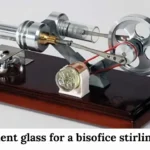What is Q V PT (Quantum Vacuum Plasma Thruster )

What is Q V PT, The term Quantum Vacuum Plasma Thruster (QVPT) represents groundbreaking advancements in two very different fields: aerospace propulsion and education. In the realm of space travel, QVPT refers to a revolutionary propulsion system that leverages quantum mechanics to potentially enable long-distance, fuel-efficient space missions.
On the other hand, in education, QVPT stands for Question, Visualization, Practice, and Testing, a comprehensive learning model designed to enhance understanding and retention across various subjects.
Importance of Both Concepts
In aerospace, the QVPT could unlock new frontiers in space exploration by eliminating the need for traditional fuel, offering an almost limitless method of propulsion using quantum vacuum fluctuations.
Meanwhile, in education, the QVPT framework encourages critical thinking, improves memory retention, and adapts to different learning styles, making it an effective strategy in classrooms.
These two interpretations of QVPT, while vastly different in application, share a common theme of pushing the boundaries of what is possible in their respective fields.
What is Q V PT in Aerospace
The Quantum Vacuum Plasma Thruster (QVPT) is an advanced propulsion system that takes advantage of quantum mechanics to generate thrust in a vacuum. Contrary to traditional propulsion systems that rely on fuel, the QVPT uses the quantum vacuum, a state where empty space is filled with fleeting particles known as virtual particles. These particles pop in and out of existence, and the QVPT aims to harness the momentum they create to propel spacecraft forward.
In essence, the QVPT uses plasma (an ionized gas) manipulated by electromagnetic fields, without the need for onboard propellant. This breakthrough could dramatically change how spacecraft are powered and reduce the logistical challenges associated with carrying large amounts of fuel for long-distance space travel.
How Does It Work?
QVPT works by manipulating quantum fluctuations in the vacuum of space. It creates a form of momentum through the Casimir Effect, which occurs when two conductive plates are placed very close together in a vacuum. Due to quantum fluctuations, certain particles are prevented from forming between the plates, creating a negative pressure that pushes the plates together. By exploiting this effect, the QVPT generates a small but continuous thrust, which can propel spacecraft without the need for conventional propellants.
For example, a projected 100 MW QVPT thruster could hypothetically reach Neptune in just over 100 days. This represents a drastic reduction in travel time compared to the 12 years currently required by conventional propulsion technologies.
Potential Applications in Space Exploration
NASA has been at the forefront of researching QVPT for future space missions. The potential for using QVPT in deep space exploration is immense, as it could enable missions to distant planets and even interstellar destinations. NASA Eagleworks, a division dedicated to advanced propulsion research, has made significant strides in demonstrating the feasibility of QVPT. If scaled up, the technology could reduce travel time to the outer solar system, allowing for the exploration of planets like Saturn in 70 days or even more distant targets like Alpha Centauri over longer periods.
Challenges and Current Status
Despite the exciting potential of QVPT, significant challenges remain. Theoretical models have demonstrated that while the QVPT can generate thrust, it is currently much weaker than conventional propulsion systems.
For example, current prototypes have only achieved thrust levels of around 1000 to 4000 micro-Newtons, which is far from what would be needed for manned missions. Additionally, the system requires large amounts of power, and developing lightweight, scalable power supplies remains a critical challenge. NASA and other space agencies continue to refine this technology, but it is still in the experimental phase.
The Educational Framework of QVPT (Question, Visualization, Practice, Testing)
Introduction to the QVPT Learning Method
In education, QVPT stands for Question, Visualization, Practice, and Testing, a method designed to enhance the learning process by integrating multiple cognitive strategies. Each component addresses a key area of learning:
- Question: Encourages curiosity and fosters critical thinking by prompting students to inquire about the material.
- Visualization: Helps learners understand abstract concepts by creating mental or physical images, diagrams, or models.
- Practice: Reinforces learning through repetition and hands-on application.
- Testing: Provides a method to evaluate understanding and retention of the material.
This framework ensures a well-rounded approach to learning, accommodating various styles and helping students to engage more deeply with the subject matter.
How QVPT Enhances Learning
- Question: Asking questions is at the heart of critical thinking. Encouraging students to form their own inquiries about a subject promotes active engagement and deeper understanding.
- Visualization: Studies have shown that people tend to retain 65% more information when presented with visual aids. Visualization helps break down complex concepts, making them easier to grasp and remember.
- Practice: Practical application of learned material is essential for long-term retention. By engaging with material through exercises or experiments, learners reinforce what they’ve studied. For example, students who practice solving math problems regularly score 30% higher on tests.
- Testing: Regular assessments give both learners and teachers feedback on the progress made. Studies suggest that students who are tested frequently retain 50% more information compared to those who are not regularly assessed.
Applications in Science and Technology Education
The QVPT learning method is especially effective in STEM education (Science, Technology, Engineering, Mathematics), where concepts often require a deep understanding of theory and practical application.
For instance, students learning about physics might visualize forces using diagrams, practice solving problems, and test their understanding through hands-on experiments. This structured approach encourages both theoretical understanding and practical skill development.
Benefits and Limitations of QVPT in Education
- Benefits: The structured nature of QVPT helps students build a strong foundation in various subjects by engaging with the material in multiple ways. It promotes critical thinking, enhances memory retention, and provides a clear path for students to follow.
- Limitations: While QVPT provides a clear framework, it can be overly rigid if not adapted to individual needs. Some students may find the repetitive nature of practice and testing limiting to their creativity, and educators must balance structure with flexibility to accommodate different learning styles.
Section 3: The Intersection of QVPT in Technology and Education
Bridging Two Worlds
Though the QVPT propulsion system and the QVPT educational model operate in different fields, both share a common goal: pushing the boundaries of innovation. In space exploration, QVPT challenges traditional propulsion technologies by using quantum mechanics to enable potentially limitless travel. In education, QVPT encourages students to think critically and solve complex problems, ensuring that they are better equipped to handle future challenges.
How Technological Advances Can Inspire Educational Practices
The innovations driving QVPT in space exploration can serve as a metaphor for how education must evolve. Just as QVPT propulsion challenges the limits of technology, educators can challenge conventional methods of teaching by embracing interactive and adaptive learning strategies.
This alignment between technology and education highlights the need for constant innovation in both fields to address future demands effectively.
Conclusion
The Quantum Vacuum Plasma Thruster (QVPT) represents an exciting breakthrough in both aerospace propulsion and education. In space exploration, QVPT promises to revolutionize how we travel through the cosmos, while in education, it offers a structured approach to learning that enhances critical thinking and retention. The potential impact of QVPT in these areas is profound, with long-term implications for how we explore the universe and educate future generations. As both fields continue to evolve, QVPT could become a cornerstone of innovation, driving progress in ways we can only begin to imagine.



No Comment! Be the first one.